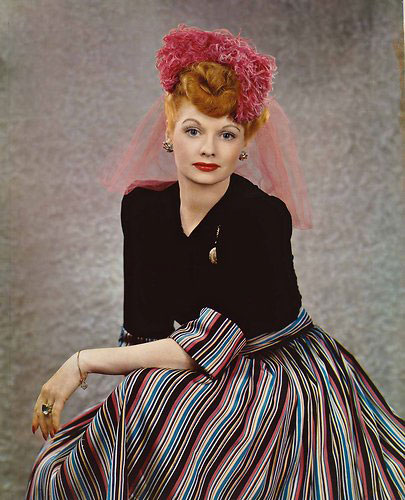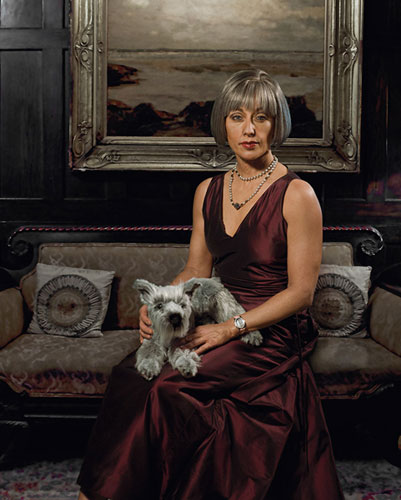
Lucille Ball, 1944, Harry Warnecke
This photograph of Lucille Ball made in 1944 by Harry Warnecke jumped out at me this morning while thumbing through the New York Times. It’s part of an exhibition at the National Portrait Gallery in Washington, D.C. Like most people, I think of “Lucy” in comedic settings, exaggerated facial expressions, slapstick, wonderful goofball humor. I don’t know the context of this photo shoot, but it’s clearly a carefully set up studio portrait. Makeup is perfect, a magnificently colorful skirt overflowing in the foreground, she seems to be sitting on a stool with her legs to the side, one over the other, her left elbow resting just above her knee. It’s’ a relaxed pose, but slightly awkward at the same time. Her famous red hair is topped with an even redder headpiece, a flimsy scrim of red fabric framing her face. But there is scarcely a hint of the clownish Lucille Ball of a few years later.
Neil Genzlinger in the Times thinks she looks a little sad, and I agree, possibly. One expects Hollywood stars to project more personality, however forced. But here Lucy appears pensive, perhaps tired. Is she waiting for something? Is it a moment of boredom in the course of series of more typical mugging for the camera? She almost seems to be saying, all right, I’m ready, let’s do the next shot. Despite all the formal portrait artifice at play, this appears an unguarded moment, a moment expressive of her unadorned self, and more naturally beautiful than ever. Warnecke didn’t do anything at that moment but click.
Of course this is all speculation. We’ll never know what was going on during that shoot, what was in her thoughts. But the enigmatic quality of that image is what brings me back to photography again and again, why I never tire of it, and why I continue to be fascinated by the world as it presents itself to me.

Untitled, 2008, Cindy Sherman
The big show in town right now is Cindy Sherman at the Museum of Modern Art. She is, as the website text states, “widely recognized as one of the most important and influential artists in contemporary art.” Note, art, not photography. We are all artists, of course, but some of us, the ones who utilize photography, are more artists than others. The curators and gallerists will never let go of this.
I don’t quarrel with Sherman’s importance, and I find her late ’70s “Untitled Film Stills” quite arresting. The references to Hollywood and TV imagery were clear, sharply realized, and there was a nifty balance between artifice and spontaneity using minimal means to evoke rather than simply mimic. In her later series, Sherman goes heavy handed, Baroque, Gothic, macabre, clownish (literally), and what have you. A grab bag of identity cliches weighed down with pounds of makeup, costuming, and prosthetics. I lost interest twenty years ago.
The photograph above shows a woman of some means sitting for a portrait, her legs to the side, her arm resting just above her knee, with a frizzy pooch, staring at the camera with a pensive, perhaps tired, look. The woman floats in a seamless environment of muted colors and surfaces. She represents a type–maybe a Park Avenue socialite. But we are gazing at a wax figure, not a person, even though that is Cindy Sherman in there somewhere. And like visiting a wax museum, we are amazed, but unmoved.